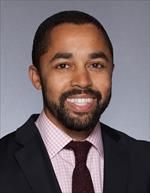90% of U.S. Counties Lack a Pediatric Ophthalmologist
Disparities in access to pediatric eye care have increased over the past 15 years and are associated with lower socioeconomic status.
There are fewer pediatric ophthalmologists in the areas of the United States where they are needed the most, according to a study published recently in JAMA Ophthalmology. Most of the 10,56 U.S. pediatric ophthalmologists identified by this research had practices in metropolitan areas or around academic institutions.
“We can conclude that rural populations disproportionately lack access to such care, which can impact the time to diagnosis, treatment, and management of complications of serious ophthalmological diagnoses in children,” investigators wrote.
Hannah L. Walsh, BS

Investigators, led by Hannah L. Walsh, BS, University of Miami Miller School of Medicine, analyzed public databases from the American Academy of Ophthalmology and American Association for Pediatric Ophthalmology and Strabismus to identify pediatric ophthalmologists as of March 2022. They identified a total of 1,056 pediatric ophthalmologists in the United States. Using the 2020 U.S. Census population estimates, investigators found there was one pediatric ophthalmologist per 3.2 million people in the United States.
The states with the most pediatric ophthalmologists include California, New York, Florida and Texas. But four of the 50 states did not have any pediatric ophthalmologists, and 90% of counties throughout the United States did not have a pediatric ophthalmologist. Researchers found that counties with one or more pediatric ophthalmologists had higher median household income compared with counties with no pediatric ophthalmologists. In the 314 counties with at least one pediatric ophthalmologist, there was a median of one pediatric ophthalmologist per 7.7 million people.
They also found that the proportion of families in each county without internet service, the proportion of people younger than 19 years without health insurance, and the proportion of households without vehicle access were greater in counties with no pediatric ophthalmologists compared with counties with one or more pediatric ophthalmologists. Investigators said these factors impact patients’ ability to access eye for children.
One limitation, the authors said, is that the databases used may include pediatric ophthalmologists who are no longer in practice or list incorrect or outdated addresses. Or they may have excluded recent graduates or newer practices. Additionally, the authors said that because the analysis also uses U.S. Census data that does not include information about undocumented immigrants, it may underestimate the disparities for access to pediatric eye care.
Julius T. Oatts, M.D.

In an invited commentary Julius T. Oatts, M.D., with the department of Ophthalmology at the University of California, San Francisco, said there are several factors contributing to this disparity in pediatric eye care. The first is a concern about the economic viability of such practices. He notes that an ophthalmology exam in a child is complex and often time consuming, which decreases the number of patients that can be seen. “The Walsh et al study confirms that pediatric ophthalmologists also concentrate in populated areas. However, while the authors suggest a notion of incentivizing the redistribution of the existing pool of pediatric ophthalmologists to more underserved areas, the more significant problem appears to be the astonishing scarcity of total pediatric ophthalmologists,” he writes.
He said the shortage of pediatric ophthalmologists represents a critical public health issue. “Vision and eye health represent an important health barrier to learning in children. Lack of access to pediatric vision screening and care also contributes to the academic achievement gap and educational disparities,” he wrote.
Briana Contreras, editor of Managed Healthcare Executive, spoke with Nancy Lurker, CEO and president of EyePoint Pharmaceuticals. Nancy shared a bit about EyePoint and how the organization’s innovative therapies are addressing patient needs through eye care, and most importantly, she addressed C-Suite positions like the CEO role. Nancy shared advice for those seeking to reach the CEO level, especially toward women in healthcare and other roles, and what it takes to run a biopharma company.
Listen
Don’t Overlook the Importance of Annual Dilated Retinal Exams
July 15th 2024The annual dilated retinal exam, a unique tool which uses drops to dilate the pupil, is not just about eye health. It offers a comprehensive view of a member's overall well-being, potentially identifying serious health issues at an early stage.
Read More
The active ingredient in Ozempic and Wegovy is linked to nonarteritic anterior ischemic optic neuropathy (NAION), the second most common form of optic neuropathy. This is apparently the first study to link semaglutide to the eye condition.
Read More